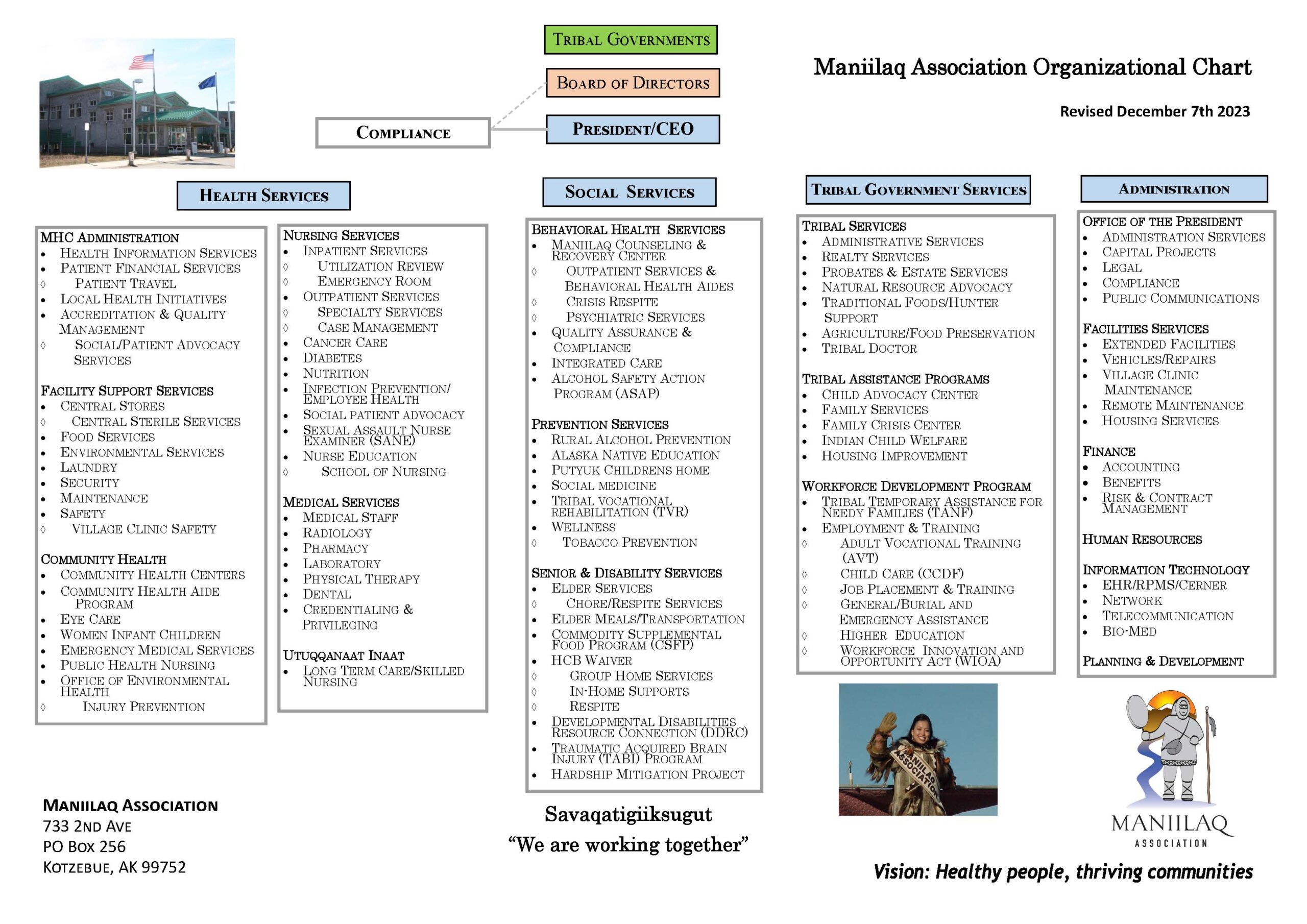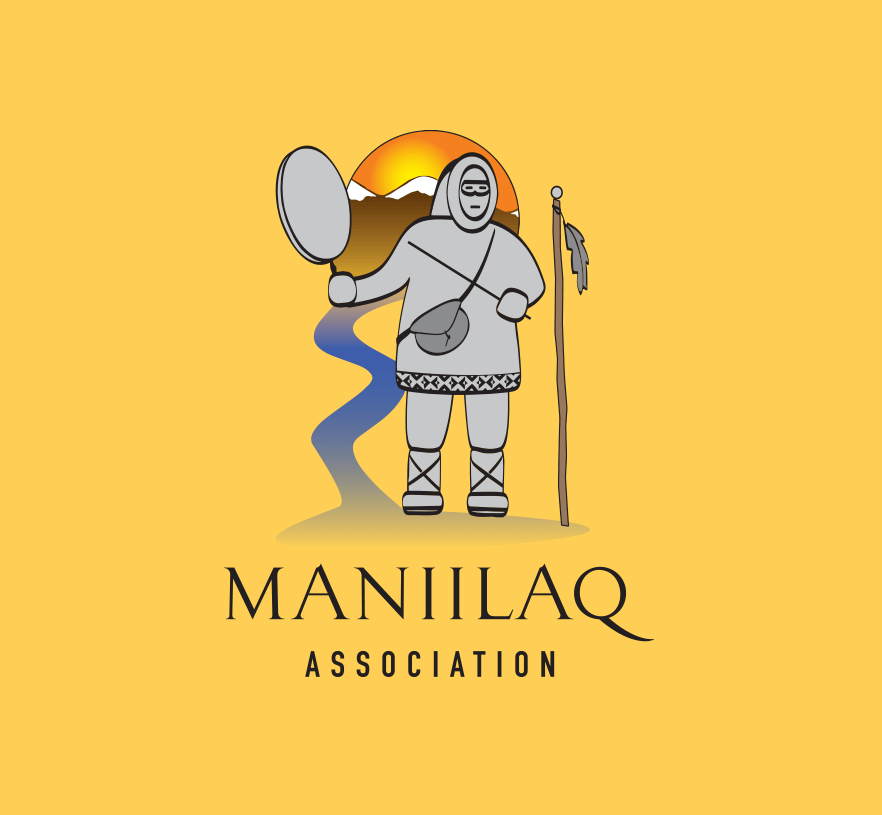ABOUT US
Maniilaq Association provides health, tribal and social services to residents of Northwest Alaska. A non-profit corporation, Maniilaq Association represents twelve federally recognized tribes located in Northwest Alaska. Maniilaq manages health, tribal and social services for about 8,000 people within the Northwest Arctic Borough and the village of Point Hope. With approximately 550 in its workforce, Maniilaq Association is also the largest employer.
HISTORY
In 1966, the Northwest Alaska Native Association (NANA) was founded to help settle the Native’s land claims issues. This non-profit organization soon became an advocate for all Native issues, including health, housing, and political rights. With the passing of the Alaska Native Claims Settlement Act (ANCSA) in 1971, a for-profit Native corporation was established and named the NANA Regional Corporation. To avoid confusion, the non-profit Northwest Alaska Native Association was renamed the Mauneluk Association, later changed to the more traditional name, Maniilaq.
The Kotzebue Area Health Corporation (KAHC) was formed in 1973. This corporation was established to care for the health needs, and it soon became apparent that Maniilaq and KAHC were performing similar functions. In 1975, the two organizations merged.
Maniilaq began the construction of a new health facility in 1980 in order to house and consolidate its rapidly expanding public service programs. By the time it was completed in 1981, the Association had grown from a handful of programs and staff to a multi-million dollar organization.
Maniilaq assumed management of the Indian Health Service (IHS) hospital programs and services and renamed it the Maniilaq Medical Center. Today Maniilaq Association manages the 80,000 square foot, 42 million dollar hospital as well as the clinics in all the villages. The organization also added to the facility a Long Term Care wing to offer nursing home services to the elders.
VISION
Healthy people, thriving communities.
MISSION
Savaqatiġiiksugut. Working together to provide high quality, culturally relevant health, social and tribal services.
Organizational Chart


